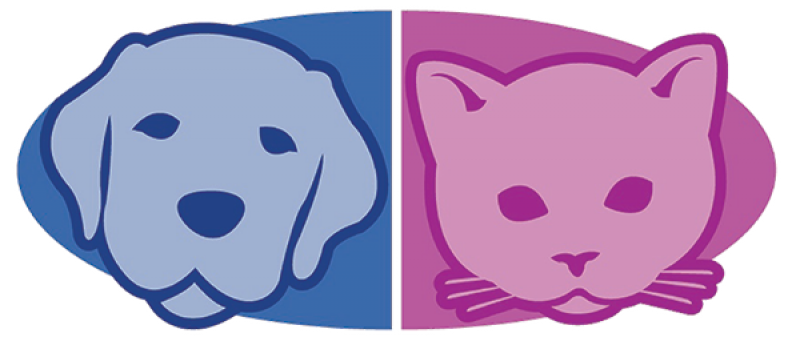Blogs, Articles, and Photos
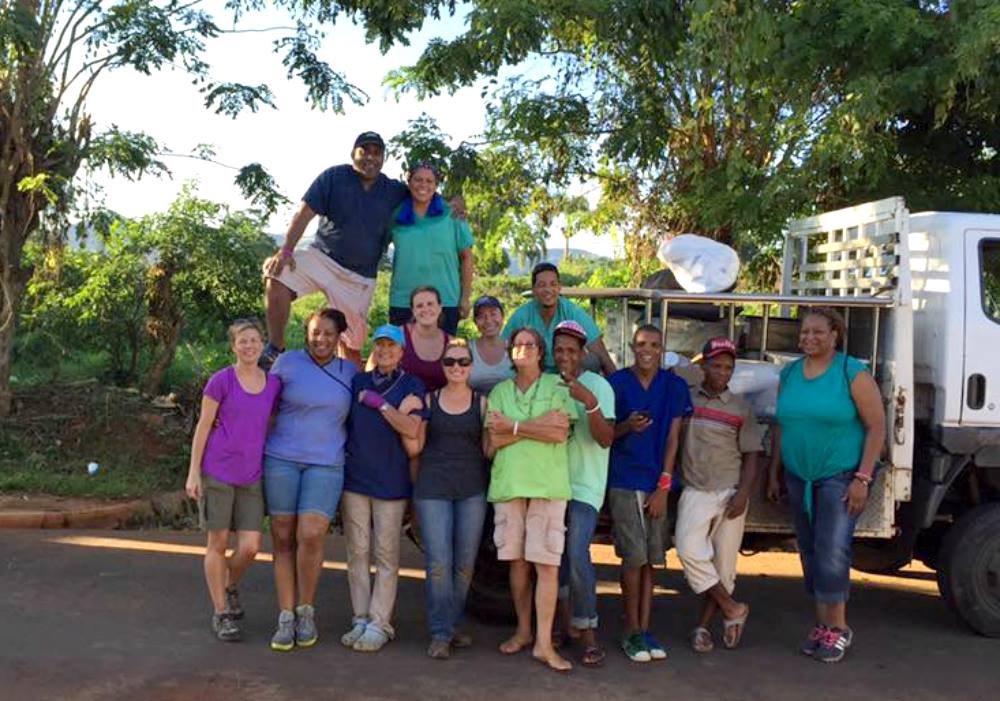 Our second annual Project Samana Georgia Team operative was a success in terms of numbers of safe, successful small animal and equine procedures, team building within our small group, and positive community outreach and education. Returning after our pioneer September trip in 2015 were Dr. Francoise Tyler, Treasure Dreher, Dr. Julia Bentley, Jacquelyn Charleston and me, Dr. Carrie McColgan. This year we welcomed team members Dr. Will Draper, technician Suzie Krapf and vet assistant Stephanie Blume. Although we are called the “Georgia Team,” and many in our team work at The Village Vets, a group of three practices founded by Drs. Will and Fran, our group included Massachusetts natives Julia and Suzie. By the end of the week we all feel like family; this trip was unique in that it included sisters Jacqueline and Stephanie, and married partners Fran and Will.
Our second annual Project Samana Georgia Team operative was a success in terms of numbers of safe, successful small animal and equine procedures, team building within our small group, and positive community outreach and education. Returning after our pioneer September trip in 2015 were Dr. Francoise Tyler, Treasure Dreher, Dr. Julia Bentley, Jacquelyn Charleston and me, Dr. Carrie McColgan. This year we welcomed team members Dr. Will Draper, technician Suzie Krapf and vet assistant Stephanie Blume. Although we are called the “Georgia Team,” and many in our team work at The Village Vets, a group of three practices founded by Drs. Will and Fran, our group included Massachusetts natives Julia and Suzie. By the end of the week we all feel like family; this trip was unique in that it included sisters Jacqueline and Stephanie, and married partners Fran and Will.
Our week began on Sunday, September 11th in a bit of a rocky fashion: the wet, slick road from Santo Domingo north over the mountains to Samana was particularly treacherous. Although it is far faster and smoother of a ride than the original gravel and dirt track, because of warm, drizzly weather conditions, our SUV (one of our two rental vehicles) was struck from behind by a car skidding to stop down a hill. Most importantly, everyone was safe, but it resulted in delays and stress on our way to Samana. In typical fashion, we were welcomed with open arms, music and delicious food when we pulled in after dark to the hotel in Samana.
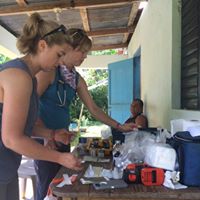 After a good night’s rest, we all piled into the pick up truck to drive 25 minutes to Los Tocones. Our SUV managed to survive the fender bender, only to succumb to a flat tire the next morning. The event was a good reminder that to thrive here requires flexibility and an ability to make last minute adjustments. Our small animal hospital was fashioned from a vacated three-sided store front. The site worked well, thanks to the efforts of Kim and Cynthia, our on-the-ground coordinating, scheduling, organizing team. With several volunteers, they were ready and waiting for us to check in pets (each pet is assigned a number and a tag that follows them from check in to recovery and check out), sit with them during recovery, clean instruments, and in general, keep things moving along. Our clinic site was nice for multiple reasons: it provided ventilation and a breeze to survive the warm humidity, and it provided a venue for curious children and their parents to watch, ask questions and interact directly with the veterinary team. Because it is more rural and distant from downtown Samana, it accommodated a region with less access to veterinary care. Whether they arrived on foot or on the back of a motorbike, word got out effectively that the Project Samana team was in town.
After a good night’s rest, we all piled into the pick up truck to drive 25 minutes to Los Tocones. Our SUV managed to survive the fender bender, only to succumb to a flat tire the next morning. The event was a good reminder that to thrive here requires flexibility and an ability to make last minute adjustments. Our small animal hospital was fashioned from a vacated three-sided store front. The site worked well, thanks to the efforts of Kim and Cynthia, our on-the-ground coordinating, scheduling, organizing team. With several volunteers, they were ready and waiting for us to check in pets (each pet is assigned a number and a tag that follows them from check in to recovery and check out), sit with them during recovery, clean instruments, and in general, keep things moving along. Our clinic site was nice for multiple reasons: it provided ventilation and a breeze to survive the warm humidity, and it provided a venue for curious children and their parents to watch, ask questions and interact directly with the veterinary team. Because it is more rural and distant from downtown Samana, it accommodated a region with less access to veterinary care. Whether they arrived on foot or on the back of a motorbike, word got out effectively that the Project Samana team was in town.
As in the town of Samana, most dogs around Los Tocones are not kept on leash (we did in fact hand out dozens of collars and leashes this year thanks to a generous Village Vets supporter, Brenda Hausknecht) and in some ways fend for themselves, but they are obviously nonetheless loved. Project Samana’s now 24 year legacy has been to educate pet owners about proper care, nutrition, and most importantly, about the importance of sterilization to reduce the number of strays in the area. 
As the small animal team developed a working scheme, Julia, Treasure and I headed out with Kim and her assistant, Erto, to meet our equine patients. Each farm or home had one or more horses, mules or donkeys waiting for us, usually tied to palm trees. As was true for dogs and cats, the equine patients are cherished; however, instead of pets or companions, these are working animals integral to the survival and welfare of families in this region. In fact, the equitarian initiative, a now global initiative to provide healthcare to working donkeys, mules and horses around the world, was born out of Project Samana co-founder Dr. Jay Merriam’s efforts to collaborate with veterinarians to spread equine welfare beyond the Samana peninsula and into the most unreachable parts of the world. It is an awesome responsibility and honor to help provide veterinary care and information to horse owners and their children in Samana.
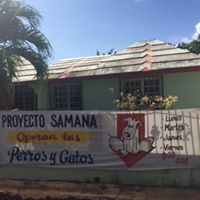
In total, we performed 126 small animal surgeries, 13 equine castrations and a handful of dental procedures and medical consultations between Monday morning and Friday afternoon. Tuesday afternoon we convinced Will to join the equine team for a couple of routine castrations. When he wasn’t actually performing surgery, Will could always be found interacting with the kids. Will’s energy and joy is infectious, and has perhaps inspired some young people to consider veterinary medicine in the future. Wednesday of Project Samana week the clinic is closed, offering a chance for some of us to take a horseback ride through the jungle to a stretch of pristine beach backed by lush greenery and bat-filled caves! On Thursday, all four veterinarians worked in the small animal clinic, allowing us to see a larger volume of cases.
Some of the cases that stood out during the week included a dog rescued from an abusive situation, who was recovering nicely from wounds, sunburn from being tied to a tree, and a nasty case of mange. We had several feline patients, including a sweet, young female cat with severe upper respiratory infection. Within 24 hours of starting antibiotics, she was breathing easier. We also saw at least one case of canine distemper, characterized by neurological deficits such as a facial tic and nasal and ocular discharge. For most U.S. veterinarians, a textbook description is the closest one gets to that disease. There were a couple of equine cases that we opted not to take on: one very unruly but handsome mule had a heart murmur that could have proved deleterious under anesthesia. Unfortunately, because this mule was so very fractious, we couldn’t perform a chest auscultation safely prior to administering intravenous sedation. Underlying tick borne diseases and IV sedation can result in a benign heart murmur, but we couldn’t assume that this was the case. The mule’s owner was disappointed because as a stallion, he was so difficult to work with, but once we explained to him that it could be life threatening, he agreed to work with the mule so that he was able to be examined by the veterinarian prior to sedation.
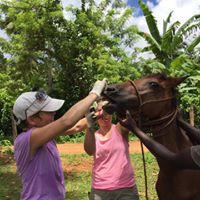 On another occasion, a request was made for us to repair an abdominal hernia on a mare nursing an 8 week old foal. Even in ideal conditions this surgery can have major complications (think a hundred plus pounds of intestine pushing on freshly sutured abdominal wall), and would have been far too risky to consider here. The mare was healthy otherwise, and we explained to the owner that future breeding should be avoided to prevent the hernia from becoming larger under the weight of a developing foal and during birth.
On another occasion, a request was made for us to repair an abdominal hernia on a mare nursing an 8 week old foal. Even in ideal conditions this surgery can have major complications (think a hundred plus pounds of intestine pushing on freshly sutured abdominal wall), and would have been far too risky to consider here. The mare was healthy otherwise, and we explained to the owner that future breeding should be avoided to prevent the hernia from becoming larger under the weight of a developing foal and during birth.
Our journey back to Santo Domingo, and then back to the States was both uneventful and bittersweet. A week of hard work together in a new environment brings colleagues and families together in a very special way. Sharing laughter together with your team after a long, hot day of minor and major problem solving is one of the rewards of participating. Partnering with Dominicans to foster respect, compassion and medical care for small and large animals is another. We are already deep into the planning stages for our Project Samana Georgia operative, September 10th-16th, 2017.
